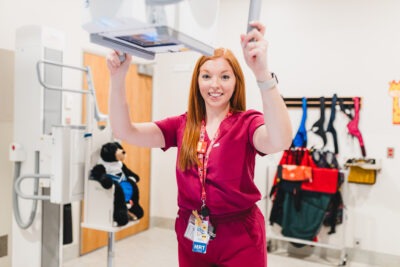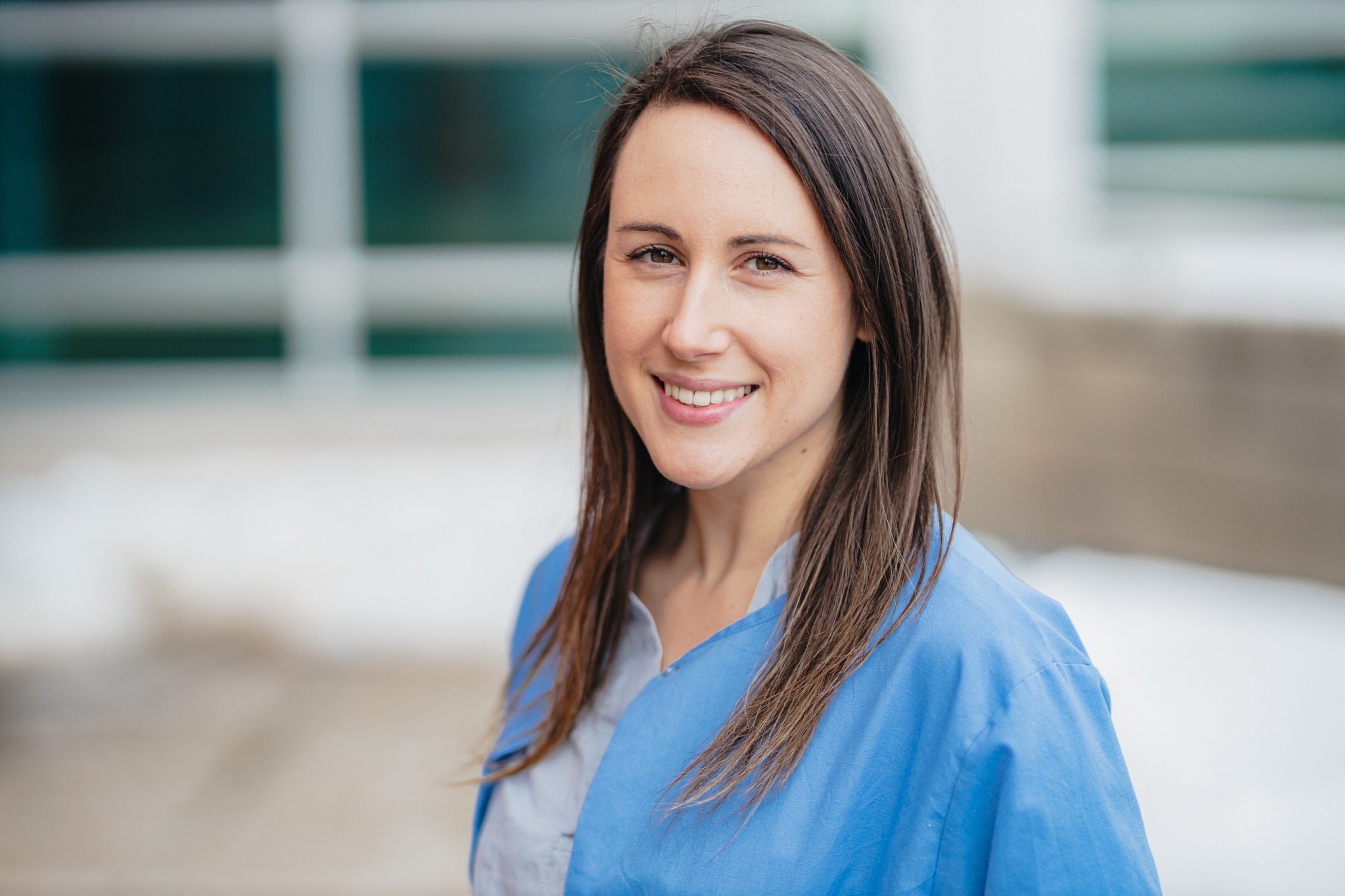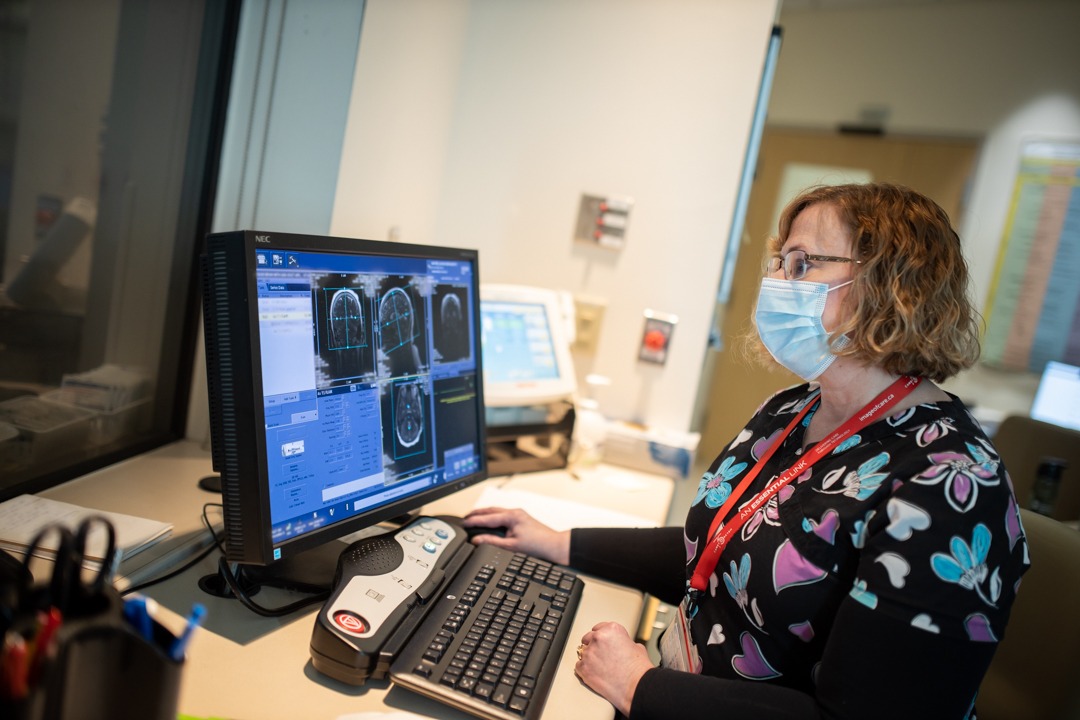
MRTs ‘radiate’ confidence in HHS career choice
The moment that Dave Mazerolle discovered medical radiation technologist (MRT) careers in his high school guidance office, he knew it was the path he wanted to take.
Mazerolle earned his diploma from the Michener Institute in Toronto and went on to become an MRT at Hamilton Health Sciences (HHS), specializing in nuclear medicine. He’s been with HHS for nearly 20 years now.
Medical radiation technology covers radiation therapy; nuclear medicine; ultrasound, echo and magnetic resonance imaging; and radiologic technology. Technologists take images used to diagnose and treat injuries and diseases, as well as administer radiation therapy treatments.
Opportunities for learning

Dave Mazerolle, nuclear medicine technologist
Mazerolle works at our Hamilton General Hospital site (HGH) as a nuclear medicine technologist. Nuclear medicine uses small amounts of radioactive material to diagnose illnesses and conditions, including many types of cancers, heart disease, fractures and arthritis.
“I enjoy learning, and working at different HHS hospital sites over the years has given me a wide range of experiences,” says Mazerolle, who has also worked in nuclear medicine at Juravinski Hospital and Cancer Centre (JHCC) and McMaster University Medical Centre (MUMC) during his HHS career.
Hamilton General Hospital is the region’s sole provider of specialized cardiovascular and neurosciences care as well as the trauma centre for central south Ontario, while MUMC specializes in caring for the region’s high-risk women’s health and gastroenterology patients, and is home to McMaster Children’s Hospital. Juravinski Hospital and Cancer Centre specializes in oncology, orthopedics and outpatient surgery.
Student placement leads to full-time work

Carly Dougherty, medical radiation technologist
Carly Dougherty has been an MRT at MUMC for seven years, joining the team right after graduating from the Mohawk College/McMaster University medical radiation sciences diploma-degree program.
“I feel like I’m constantly building connections and having new experiences.” — Carly Dougherty
“I had done a student placement at MUMC and was hired directly after graduating,” says Dougherty, who works in radiography, which uses radiation and non/minimally-invasive technology to provide images of bones, tissues, organs and vessels.
“I always knew I wanted to work in health care, and was looking at career options,” says Dougherty, who discovered the Mohawk/McMaster program while in high school, browsing through McMaster’s online program catalogue.
Dougherty is trained to perform x-rays and CT scans. She works in the interventional radiology department and the operating room, as well in the x-ray department and throughout hospital wards.
“I really enjoy the variety,” says Dougherty. “That’s the exciting part for me. I can work in many areas on the hospital, with a diverse group of colleagues and patients. I feel like I’m constantly building connections and having new experiences. And every day, I feel like I’m making an important and positive impact on people’s lives.”
For more information about HHS careers, including job listings, please visit the careers page.






